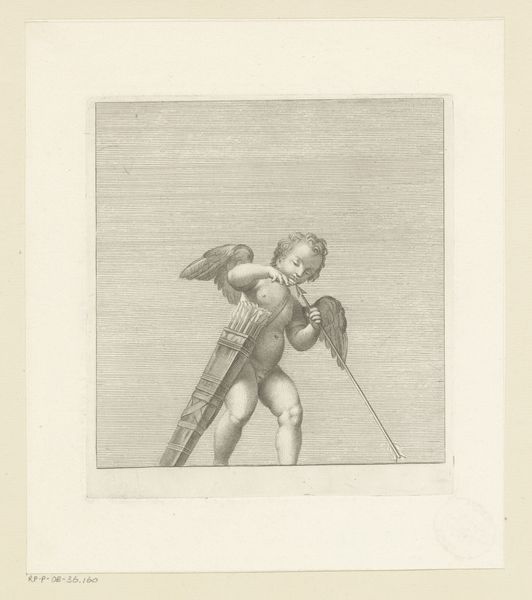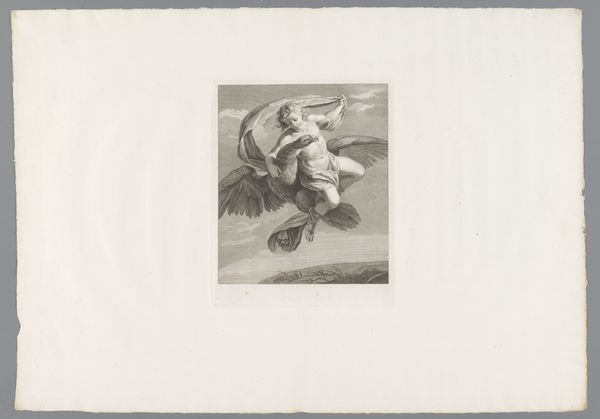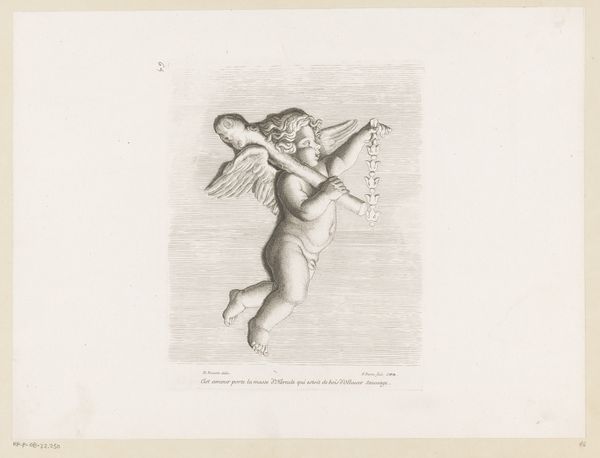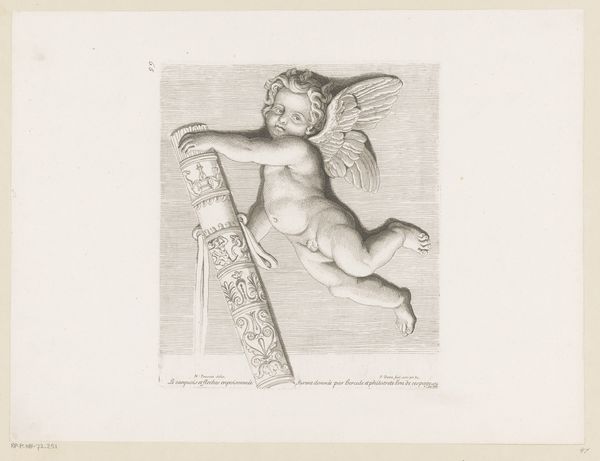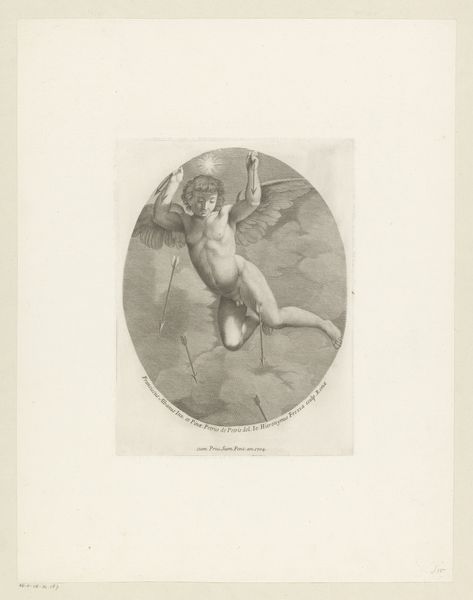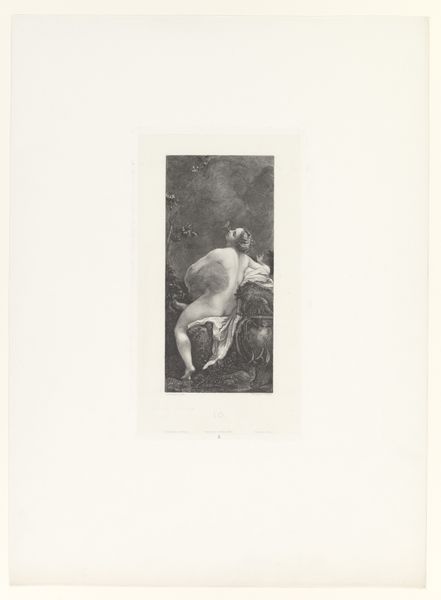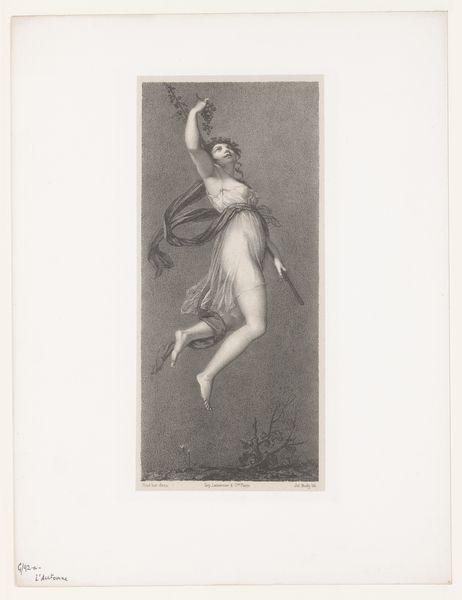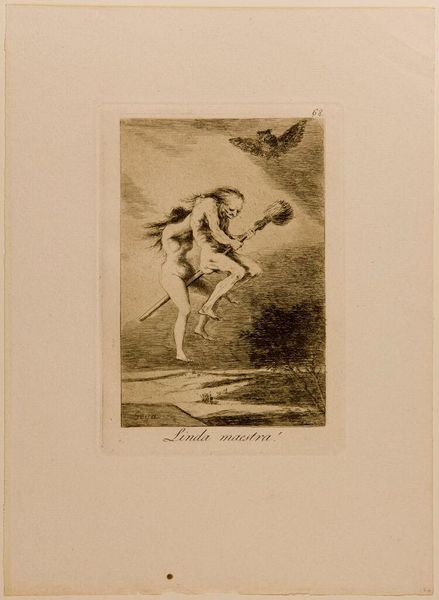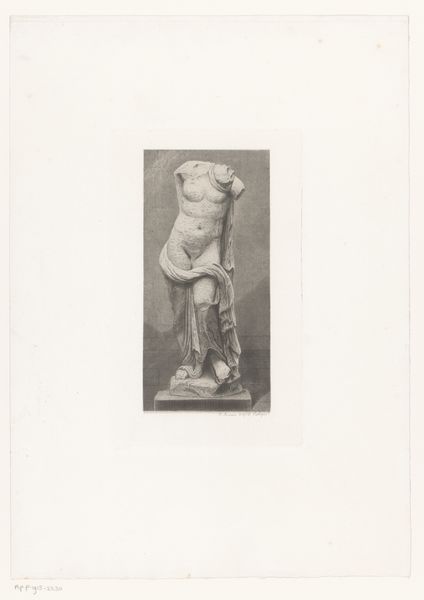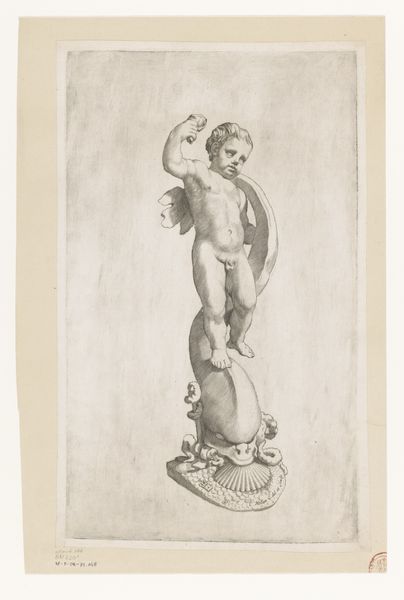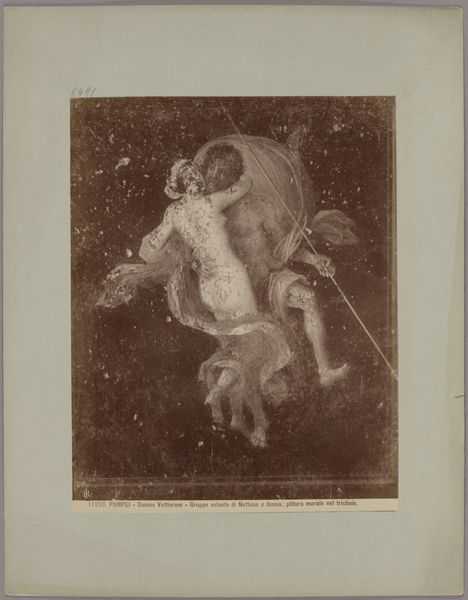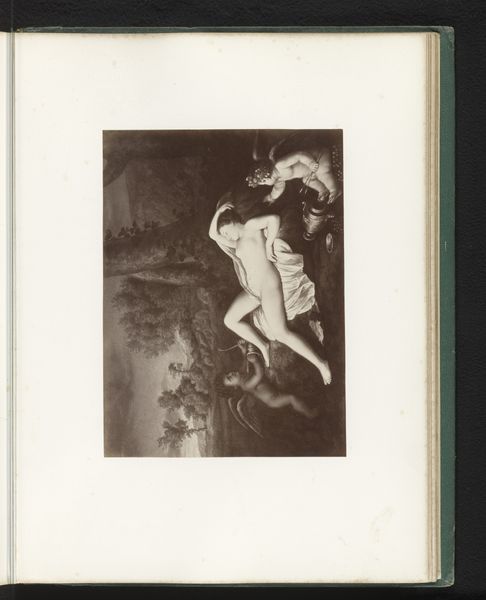
engraving
#
allegory
#
baroque
#
figuration
#
engraving
Dimensions: height 180 mm, width 163 mm
Copyright: Rijks Museum: Open Domain
Curator: Looking at "Putto met speer en hoorn" from 1713, an engraving by Giovanni Girolamo Frezza. Editor: There's an immediacy to this, despite its age. The cherubic figure is almost startling in its liveliness, especially for an engraving. You can feel the breath forcing air into the horn, poised and ready for action. Curator: Well, it’s important to understand how engravings functioned in the 18th century. Frezza wasn't necessarily making "original" art. He was likely reproducing an existing painting or sculpture for wider distribution. Consider it a form of early mass media. The material of engraving also lends a very fine precision and clarity. Editor: I suppose I'm interested in the choices embedded within that reproductive process. The sharp contrasts of light and shadow. The emphasis on the putto's almost unsettling expression. It wasn't just mechanical reproduction. Someone, Frezza, had to actively decide how to translate the original. And what sociopolitical impact that could make for audiences, with religious symbolism playing a powerful role in the 18th century. Curator: I would wager he aimed to create something marketable. Prints like these circulated through networks of collectors, artists, and merchants. They demonstrate Baroque sensibilities. A lot of this trade of artistic representations shaped aesthetic tastes across social classes. This putto is presented for consumption. Editor: Interesting. We see this figure, seemingly caught in a moment of declaration or proclamation, and it's transformed by the labor involved in its creation. This changes how we perceive its role in its original sociopolitical framework, shifting from representation into a unique artistic statement about faith, class, and labor of its time. Curator: Perhaps. Regardless, Frezza's "Putto met speer en hoorn" is an intriguing demonstration of the production processes influencing art appreciation of the time. Editor: And for me, the reproduction speaks of much more beyond a specific artistic value and trade networks; how the meaning can change as labor and purpose recontextualize its significance within society and political systems.
Comments
No comments
Be the first to comment and join the conversation on the ultimate creative platform.

